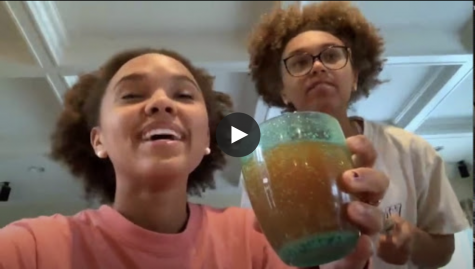Take A Moment to Acknowledge Your Best Buddy: Stress
High school students often consider stress and anxiety their biggest obstacles. Since the school understands the many commitments students have to juggle around, administrators and staff also seek to support mental health. In an effort to educate students about stress and anxiety, psychologist Dr. Lisa Damour presented at an all-school meeting on Wednesday, January 8 about how to understand and manage anxiety.
Dr. Damour is a clinical psychologist and New York Times-bestselling author. Her books, Untangled: Guiding Teenage Girls Through the Seven Transitions into Adulthood and Under Pressure: Confronting the Epidemic of Stress and Anxiety in Girls, focus on mental health in young women. Dr. Damour also contributes to CBS News, writes a weekly column for The New York Times, and maintains her own private psychotherapy practice. Damour earned her B.A at Yale University and her Ph.D at the University of Michigan.
To start the morning, Dr. Damour met with full-time faculty members to review the seven transitions that all teenagers must experience in order to successfully transition into adulthood. These transitions are parting with childhood, joining a new tribe, harnessing emotions, contending with adult authority, planning for the future, entering the romantic world, and caring for themselves. At the subsequent all-school meeting, Dr. Damour emphasized that there are positive and negative forms of stress. Nithya Chundi ’23 said, “I felt that the talk was really helpful in explaining how much of a factor [stress] plays in our daily lives. In the future, [her talk] can benefit students who experience stress and anxiety to help manage it.”
Anxiety is another area in which Dr. Damour specializes in that she hoped to inform the school community about. Damour mentioned that anxiety is a tool one’s ancestors used to protect themselves from danger. She explained that when people get nervous, anxiety is their body’s way of informing them of a potential threat. Transient stress can help us survive, but when students feel distressed about minor issues constantly, it is a problem.
Having recovery time and rejuvenating oneself from both stress and anxiety is an idea that Dr. Damour said would be beneficial to the mind. Damour suggested square breathing as a technique to relieve anxiety. In square breathing, one inhales for three seconds, holds the breath for three seconds, exhales for three seconds, and hold without breath for three seconds. If done when anxious, square breathing can improve one’s performance significantly on a test, at a game, or a music recital. In the future, better results may show after this small but powerful breathing exercise. Dr. Damour spoke about other stress-relievers including watching childhood movies, talking to a friend, playing sports, and even crying.
Students and adults said that the program was informative and inspirational. Ella Welch ’20, co-head of Bring Change to Mind, a mental health awareness club, said, “I think [students] will now have a different outlook on stress. She was very honest with us when she highlighted that stress is okay; you don’t need to be embarrassed.”
To end her visit, Damour met with students who identify as girls to expand on stress and anxiety and how they are experienced by women in our society.







